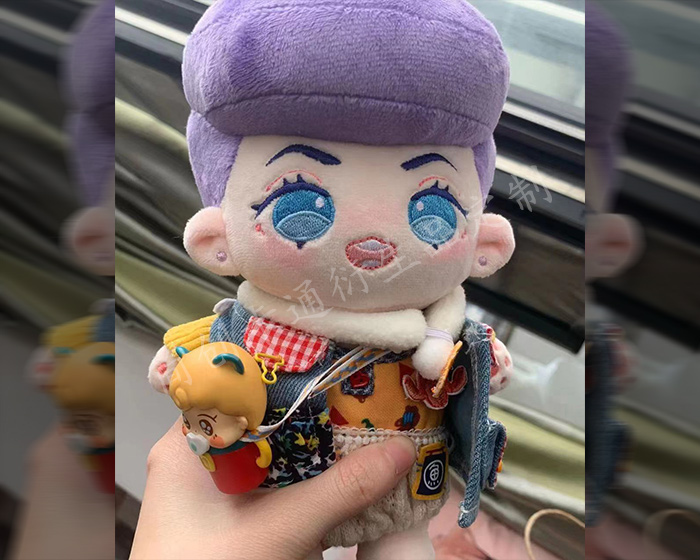cotton doll making is a rich cultural tradition found in various parts of the world. Let's explore some of the diverse cultural traditions of cotton doll making:
-
Rag Dolls (United States and Europe): Rag Dolls have a long history in the United States and Europe. Traditionally made from scrap fabrics or worn-out clothing, these dolls were crafted by hand using basic sewing techniques. Rag dolls often feature simple designs, stitched faces, and yarn hair. They symbolize the resourcefulness and creativity of earlier generations.
-
Kimekomi Dolls (Japan): Kimekomi dolls are a Japanese craft dating back to the 18th century. These dolls are made by tucking small fabric pieces into grooves or slits on a wooden base. Traditionally, the dolls represent historical figures, characters from folklore, or geisha. They are adorned with elaborate silk kimono fabrics, delicate embroidery, and hand-painted details.
-
Traditional Russian Dolls (Russia): Traditional Russian cotton dolls, known as "matryoshka" or nesting dolls, are a beloved symbol of Russian culture. Matryoshka dolls consist of a set of wooden dolls of decreasing size, nested one inside the other. The outer doll is often painted as a woman wearing a traditional Russian costume, while the inner dolls can represent family members or traditional folk characters.
-
Indian Cloth Dolls (India): India has a rich tradition of cloth doll making, with various regional styles and techniques. For example, the "Golu" dolls of South India are made of cotton or clay and are displayed during the Navaratri festival. The "Kathputli" dolls of Rajasthan are cloth puppets known for their intricate detailing and vibrant costumes, used in storytelling and traditional performances.
-
West African Ancestor Dolls (West Africa): In West Africa, cotton is often used to create ancestor dolls as a way to honor and connect with ancestral spirits. These dolls, made from cloth and other materials, are believed to carry the spirits of deceased loved ones. They are dressed in traditional clothing and often adorned with beads, shells, and other symbolic elements.
-
Otomi Dolls (Mexico): Otomi dolls are handcrafted by the Otomi indigenous people of Mexico. These cotton dolls are known for their colorful embroidery, reflecting the vibrant traditional designs of the Otomi culture. Otomi dolls are often made as decorations or toys, featuring intricate patterns and symbolic motifs.
-
Worry Dolls (Guatemala): Worry dolls, also known as "muñecas quitapenas" in Spanish, originate from the Mayan culture in Guatemala. These tiny dolls, traditionally made from cloth and yarn, are believed to take away worries and bring peace. It is customary for individuals to share their worries with the dolls and place them under their pillows at night.
These are just a few examples of the cultural traditions surrounding cotton doll making. Each tradition carries its own unique techniques, symbolism, and historical significance, showcasing the diverse ways in which cotton dolls are woven into the fabric of different cultures around the world.
The following are some examples of plush toys that our factory customizes for customers. Check out if there is one that you like best.
-
Custom Stuffed Animals
-
Plush Toy
-
Plush Dolls
-
Custom Animal Plush
-
Cute Plush Doll
-
Custom Stuffed Dolls
-
Custom Plush Toy
-
Cotton Dolls
-
Weighted Plush Toys
-
Cute Stuffed Animals
-
Custom Pet Stuffed Animal
-
Warmies Stuffed Animals
-
Weighted Stuffed Animal
-
Soft Toys
-
Plush Stuffed Doll
-
Custom Stuffed Dolls
-
Plush Maker
-
Bear Stuffed Toy
-
Anime Plush
-
Custom Stuffed Animal
-
Anime Plush
-
Custom Plush Toy
-
Personalised Stuffed Animal
-
Plush Animal Toys
-
Custom Plush Makers
-
Custom Plushies
-
Toy Manufacturer
-
Rag Doll Making
-
Custom Toys
-
Dog Plush Toys
-
Custom Rag Doll
-
Stuffed Animals
-
Custom Plush
-
Custom Plush Dolls
-
20cm Cotton Doll
-
Jojo Plush
-
Custom Doll
-
Jojo Doll
-
Large Plush Toys
-
15cm Cotton Doll
-
Dumpling Plush
-
Cotton Doll


























